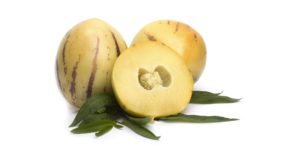Early blight is a fungal disease caused by a fungus Alternaria solani, which mostly affects tomato and potato plants, causing significant losses if not effectively controlled.
The disease can also occur on other solanaceous crops like eggplant, capsicum etc.
Disease Cycle
The pathogen overwinters in infected plant materials in the soil or even on solanaceous weeds.
The fungus produces a lot of spores under cool and moist conditions which are then blown by wind or splashed by water to adjacent plants to initiate infection.
Every part of the crop can be infected with this disease, eventually forming lesions. Older leaves and those under stress are more susceptible.
Spores invade the plant tissues either through direct penetration or through injured/damaged areas.
Infection & Symptoms
Despite its name ‘early blight’, symptoms usually develop on the older leaves, mostly, nearing the end of the season.
- Brown lesions develop on older leaves. These lesions are dry and papery and develop characteristic concentric rings of raised and necrotic tissue as infection progresses. Infected leaves become chlorotic then necrotic and this may cause defoliation.
- On stems, lesion start as small, dark and slightly sunken regions which enlarge as infection continues. Concentric rings may also develop.
- Infected tubers develop dark sunken lesions which are usually surrounded by a purple-like raised margin. Tuber tissue is usually dry, brown and leathery. Infection continues even in storage causing the tubers to shrivel.
- Fruits that are infected with this disease have lesions which appear leathery and may also contain the concentric rings. These lesions could be covered with a mass of black fungal growth as infection progresses.
Management & Control
- Chemical Control
This method of control involves the use of chemicals (fungicides).
The following fungicides are effective against early blight disease.
- CADILAC 800WP 50g/20l (for prevention purposes)
- DISCOVERY 400SC 10ml/20l
- EXEMPO CURVE 250SC 15ml/20l
- FORTRESS GOLD 720WP40g/20l
- KATERINA 720SC 40ml/20l
- MEGAPRODE LOCK 525WP 15g/20l
- MILLIONAIRE 690WDG 40G/20L
- PROVIDENCE 400WP 50g/20l
- RANSOM 600WP 15g/20l
- PYRAMID 700WP 50g/20l
- RIMETA GOLD 300SC 40ml/20l
- TOMAHAWK 250EC 10ml/20l
- TOWER 720WP 50g/20l
- COLONIZER 440WP 50g/20l
- COMRADE 450SC 20ml/20l
- TRINITY GOLD 425WP 50g/20l
Note;
- Whenever conducting any foliar spray, mix the fungicide with INTEGRA 3ml/20l in order to improve its efficacy.
- Alternating the fungicides helps in preventing the pathogen from developing resistance towards either of them.
- Timely application of the fungicide is very important.
Other Management Practices
- Field sanitation, e.g. removal of the infected plant materials
- Crop rotation with non-host crops
- Use of resistant varieties
- Avoid overhead irrigation (disease spreads very fast if foliage is wet)
- Proper weed control (weeds harbour pathogens)
- Harvest tubers when soil is not wet and avoid injuries
- Plant certified or disease free seeds






